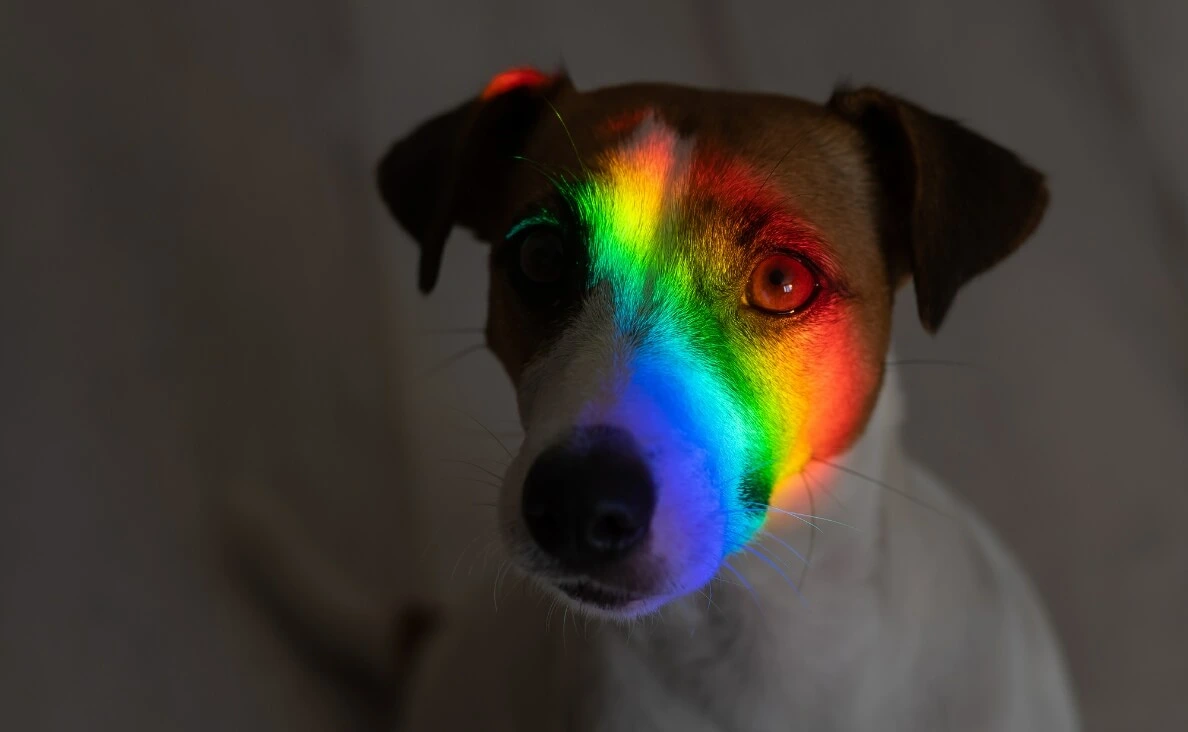As pet owners, we often wonder about the sensory experiences of our furry companions. One intriguing aspect is how dogs perceive colors. While dogs don’t see the world the same way humans do, they have a unique visual system that allows them to perceive a range of colors. Understanding how dogs see colors can enhance our relationship with them and help us choose appropriate toys, accessories, and environments that are more visually stimulating for our pets.
Understanding Dog Vision
To comprehend how dogs see colors, we first need to understand a bit about their vision anatomy. Dogs have fewer cone cells in their retinas than humans do. Cone cells are photoreceptors responsible for color vision. Humans have three types of cones that allow us to see a broad spectrum of colors—red, green, and blue. Dogs, on the other hand, have only two types of cones, which means their color vision is somewhat similar to that of a human who is red-green colorblind.
The Color Spectrum for Dogs
-
Blue and Yellow:
- Dogs can see shades of blue and yellow quite well. They can distinguish between various shades of blue and yellow, making these colors appear vibrant and easily recognizable.
-
Gray Scale:
- Dogs perceive the world in shades of gray, particularly when it comes to colors that fall outside their vision spectrum. This means that colors like red and green will likely appear as varying shades of gray to them. This ability to see in grayscale helps dogs in low-light conditions, allowing them to navigate their environment effectively, especially during dusk and dawn when they are most active.
-
Limited Red and Green Perception:
- Colors such as red, orange, and green may appear muted or even indistinguishable to dogs. For instance, a bright red ball might look more like a gray or brownish color to a dog, making it less attractive than a blue or yellow toy.
How Dogs Use Their Color Vision
Although dogs don’t see the full color spectrum that humans do, their vision is well-suited for their needs. Dogs are primarily active during dawn and dusk (crepuscular), and their eyes have adaptations that allow them to see well in low light. Here are some ways in which dogs utilize their color vision:
-
Hunting and Tracking: Dogs rely more on their sense of smell than vision for hunting, but their ability to see in low light and their sensitivity to movement helps them track prey effectively.
-
Social Interaction: Dogs can perceive body language and cues from their owners, which often rely more on movement and shape rather than color. The colors that dogs can see (blue and yellow) are also common in nature, allowing them to identify various elements in their environment.
Choosing the Right Toys and Accessories
Knowing what colors dogs can see can be beneficial when selecting toys and accessories. Here are some tips for choosing the right items:
-
Opt for Blue and Yellow Toys: Toys that are blue or yellow are more likely to capture your dog’s attention. This can make playtime more enjoyable and stimulating for them.
-
Avoid Red and Green Items: Toys or accessories that are red or green may not stand out to your dog. Instead, choose items in colors that align with their vision capabilities.
-
Consider Textures and Sounds: Since dogs rely heavily on their other senses, incorporating toys that have interesting textures and sounds can enhance their play experience, even if the colors aren’t highly visible to them.
Conclusion
In summary, dogs perceive the world differently than humans do, particularly when it comes to color. Their vision is adapted for their needs, allowing them to see shades of blue and yellow while struggling to distinguish reds and greens. Understanding how dogs see colors can help pet owners make informed choices about toys and accessories, ultimately leading to a happier and more engaging environment for their pets.
Takeaway Tips
- Choose Blue and Yellow Toys: These colors are more visible and appealing to dogs.
- Avoid Red and Green: These colors may appear dull or indistinguishable to dogs.
- Enhance Engagement: Incorporate toys with interesting textures and sounds to stimulate your dog's other senses.


